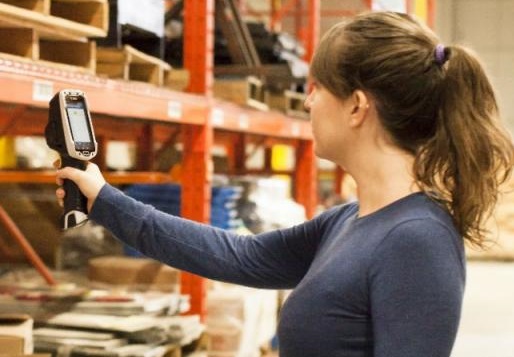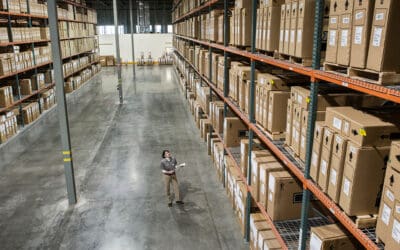As labor shortages and surging demand continue to strain warehouses and their ability to keep up, now is a critical time to be looking at strategies to quickly boost efficiency and productivity.
By automating and streamlining more of the tasks and work that need to get done in the warehouse every day, we can get more done in less time, with less labor. In turn, that frees up everyone to fulfill more orders and focus on more value-added and strategic tasks with less stress and effort overall.
Achieving that kind of balance and performance starts with technology and, specifically, solutions for digitalization, modernization, and automation. In fact, a McKinsey Global Institute report found that improving efficiency through digitizing and automating processes can potentially drive 60% growth in annual productivity.
But in its pre-pandemic Warehousing Vision Study, our partners at Zebra Technologies found that 77% of warehouse operators who agreed that they need to modernize their operations said they were slow to implement new devices and technology.
Since then, as the pandemic has driven unprecedented demand along with many supply chain challenges, many warehouses have been forced to start modernizing and optimizing their operations. No one can afford to fall behind anymore because the stakes are now higher, and things aren’t getting any easier with widespread labor shortages and supply chain delays.
The good news is that there are relatively easy ways to start automating and digitizing your warehouse by upgrading to the latest mobile warehouse technologies and software, which can put even small and medium-sized businesses on par with the biggest and best-performing players in the warehousing and fulfillment space.
One solution that we’ve worked with Zebra to implement in our customers’ warehouses is Zebra’s TC8300 touch mobile computer, which combines a barcode scanner and mobile computer in a unique form factor that increases warehouse worker productivity by 14% while enabling 40% faster data entry with 60% fewer errors.
The TC8300 is a handheld scanner with a touch mobile computer placed on top of the scanner, so workers can use it as a gun-style scanner and immediately see scanning results without having to tilt the device. But it’s not only more efficient and ergonomic as a scanner; touch screen interactions and customizable virtual keyboards enable lightning-fast and error-proofed data entry and faster completion of tasks and orders, including entering quantities, verifying correct order picking, and processing warehouse transactions.
Similarly, Zebra’s rugged tablets are allowing warehouses to digitize many of their processes, go paperless, and streamline work by providing high-powered mobile computing with touch screen simplicity, built-in barcode scanning, and more screen space. The larger screen size of tablets allows warehouses to display more data and information while minimizing the number of screens needed to complete software transactions. Additionally, the advanced computing power of an enterprise-grade tablet means you can run even the most resource-intensive business apps on a mobile device that’s virtually as powerful as a desktop or laptop computer.
Warehouses can also dramatically improve their picking efficiency and accuracy with hands-free and voice-directed picking technologies. These solutions combine a wrist-worn mobile computer, finger-worn ring-style barcode scanner and headset with voice-directed picking software to enable unprecedented picking speeds.
Instead of having to juggle different mobile devices and pick up and put down boxes, products, or other items to conduct scanning and fulfill orders, workers can do it all with hands-free convenience that’s far more efficient. The software directs them to the correct location of each item they need to pick, along the most efficient route, and the ring scanner allows them to scan and verify each correct pick. The wrist-worn mobile computer allows them to access pick lists and perform inventory and fulfillment transactions with a tap of their finger, making the whole process far quicker and simpler.
Workers love using these solutions because these technologies help minimize the amount of walking workers have to do in the warehouse every day, and they make their jobs easier. That’s huge at a time when many workers are now choosing from prospective employers based on who has the technologies to simplify their work.
Warehouses also benefit because it takes far less training to get new workers up to speed with these solutions, and the efficiency gains are invaluable. In fact, a Georgia Tech study found that picking accounts for 63% of all operating costs in a typical warehouse, so anything that can improve productivity and efficiency in this area is an automatic win for cost control or cost efficiency.
Another way warehouses are using automation to improve their performance is by using barcoding or radio frequency identification (RFID) to optimize their cross-docking and outbound loading and logistics.
By using handheld mobile computers to scan barcodes or read RFID tags on packages or pallets, warehouse managers and workers are able to ensure that each labeled or tagged item is loaded on the right trailer with the right carrier, to complete each order as accurately and efficiently as possible.
In particular, RFID can help maximize loading and logistics efficiency and accuracy by using fixed RFID readers and sensors at loading dock doors to automatically read tags as items move within range of the reader.
These are just a few examples of the many ways you can leverage technology to modernize, digitize, and automate your warehouse operations. The right options for your warehouse will depend on where you are today, where you want to be, and where you can make the smartest and most strategic moves with the best return.
To learn more about these technologies, and the experience we’ve had helping our customers, contact our technology experts at MSM Solutions today.


